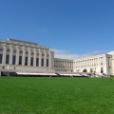For new cars, in Switzerland people tend to opt for leasing agreements.
A lease is drawn up in the same place where a car is sold. The monthly lease amount is set according to the number of months of the lease and the kilometers expected to be driven.
At the end of the lease, the renter has two options: either to return the vehicle to the dealer or buy the vehicle by paying a lump sum (essentially the residual value of the car).
Leasing a car in Switzerland
- Upon signing the contract, a deposit is due which usually ranges from 1,000 CHF to 10% of the price of the vehicle;
- The penalty for additional kilometers is often very high, however, if the number of kilometers set out in the contract has not been reached, the difference will not be returned;
- In the case of a lease, no tax deductions can be made (on the capital tax);
- The bank is the only owner of the vehicle during the course of the lease.
Common features of car lease contracts in Switzerland:
Example of how a lease price is calculated
Sum for lease financing = Net price - residual value
Net Price: list price (minus rebate, if there is one)
Example: list price: 25,000 CHR. Rebate of 7%. 25,000 CHF x 7% = 1,750 and the final net price: 23,250 CHF.
The residual value: the price which the garage will buy the vehicle from the bank at the end of the contract varies depending on the age of the car, mileage, model, etc.. This is generally calculated as a percentage of the list price.
Example: list price: 25,000 CHF - Percentage of residual value: 42.3%. Residual value: 10,575 CHF (25,000 CHF x 42.3%)
In this example the amount to be financed in the lease is: 23,250 CHF minus 10,575 CHF = 12,675.
The sum to be financed must also included interest (to be negotiated), and the VAT.
In order to obtain the monthly lease amount, the resulting value must be divided by the number of months in the lease.







